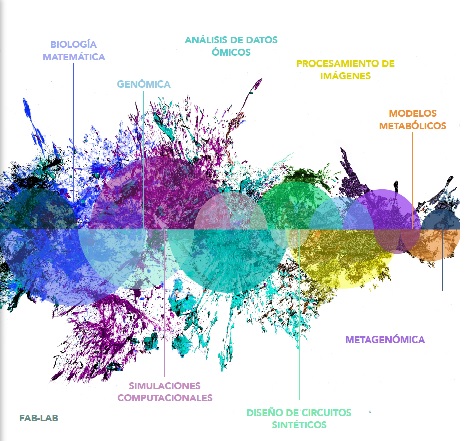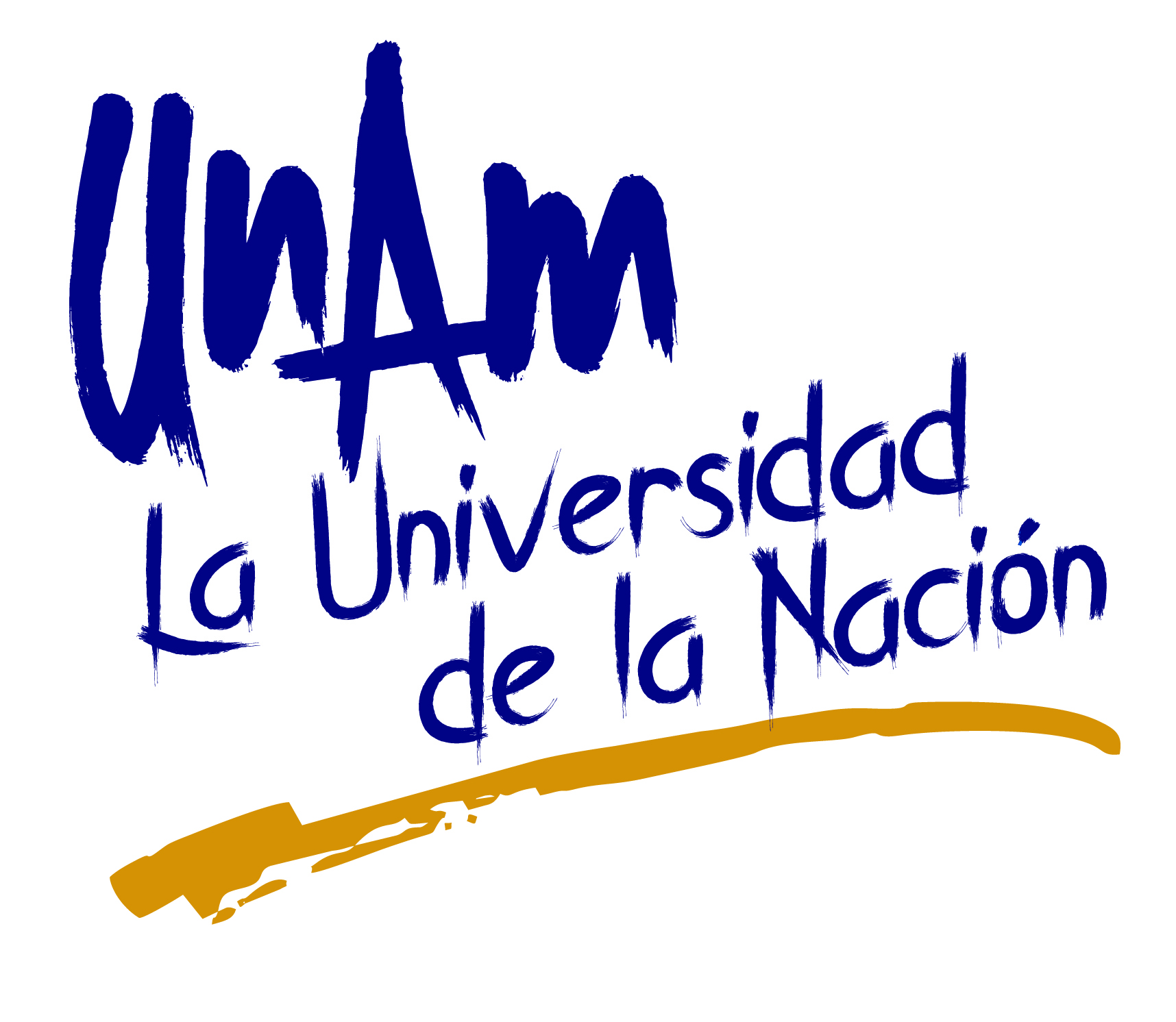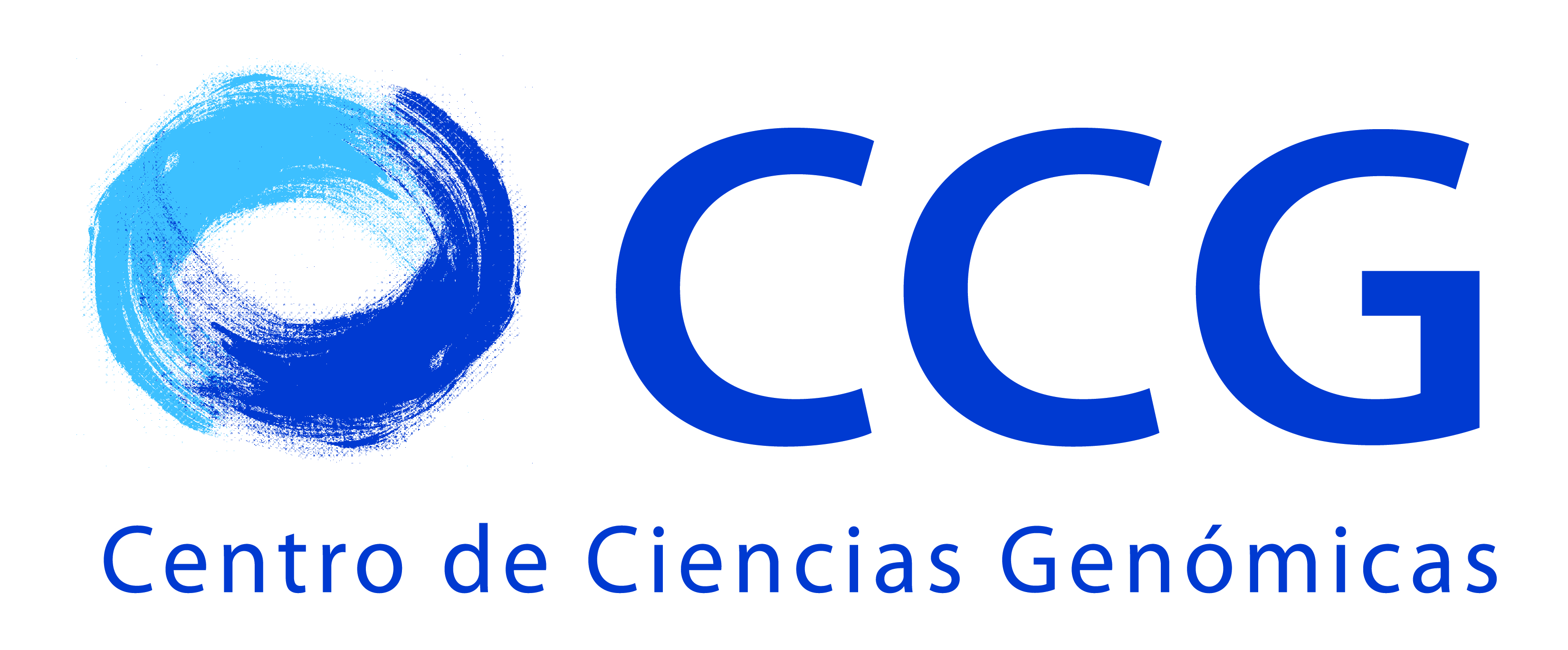Our History
From Nitrogen Fixation Research Center (CIFN) to Center for Genomic Sciences (CCG)
In June 2004, the Internal Council of the Nitrogen Fixation Research Center (CIFN) issued a proposal to change the name of the entity to Center for Genomic Sciences (CCG).
In agreement with the University Legislation, this proposal was presented to different University bodies for its revision and approval. It was accepted by the Technical Council of Scientific Research (CTIC) on July 1st, 2004; by the Academic Council of the Biological and Health Sciences Area (CAAByS) on September 8th, 2004; and by the University Council on November 12th, 2004 .
Later on, the main components of this proposal were presented: the academic basis, the main actions for the development and contribution of the center to Genomics, the available infrastructure, as well as the mission, objectives and academic structure proposed for the center.
1. Basis of the proposal.
The CIFN was founded in 1980 and its facilities in Cuernavaca, Morelos were inaugurated in 1981, becoming the pioneer entity of the those days UNAM Morelos Campus.
The research made in CIFN regarding the biological systems of the symbiotic or associative Nitrogen fixation was basically framed on the molecular biosciences and the theoretical Biology. Such research derived, during the last years, towards the emerging subdiscipline that is now known as Genomic Sciences.
The CIFN academics demonstrated their ability to approach research in a specific system and take it to frontier levels in the international context in different areas, such as theoretical biology, metabolic engineering, molecular ecology, genome evolution and dynamics, amongst others. In the past, the research groups of the CIFN expanded their interests and scientific vision in order to contribute to the development of UNAM and the country in a strategic area considered a new scientific paradigm where several disciplines converged: Genomic Sciences.
It is important to highlight that at the time of the proposal, the CIFN had already made contributions to the field of Genomic Sciences, in Nitrogen fixing bacteria as well as in other bacterial model systems and plants.
Academics and students of the CIFN proposed, without abandoning the research of Nitrogen fixation biological systems, now framed in Genomics, to get into new research lines focused on model organisms, which resulted ideal for solving new genomic problems. These lines would adopt as study systems bacteria, organelles of superior organisms and plants. In the same way, they pretended to undertake the study of some aspects of animal genomes, including the human genome in collaboration with other institutions. The research lines on Genomic Sciences boarded by all the different research programs are mentioned ahead.
I.1 What are Genomic Sciences?
One of the most revolutionary frontiers of Biological Sciences is based on the comprehension of the totality of the organisms' genetic information or “genome”. Genomic Sciences is the name given to the knowledge that is needed to achieve such integration.
Science is facing a shift in the molecular biology paradigm, which was classically centered on the gene, to a new integration level centered on the genome. Recent advances regarding the ability to obtain DNA (molecule in which genetic information is coded) sequence with high efficiency and precision, as well as its expression at RNA level (transcriptome) and protein (proteome) together with the capability of interpreting such information by means of computational biology tools (bioinformatics) offer the possibility to understand the complete genetic structure of specific organisms, their function and regulation.
Aside from the staggering increase of the biological knowledge derived from Genomic Sciences, the repercussion of this knowledge in relevant areas of medicine, agriculture, environment and industry, as well as in legal and ethical aspects, are of fundamental transcendence for society. In this context, Genomic Sciences represent a strategic area in today's world.
Considering Genomic Sciences in a broad sense, they include the fields of biochemistry, molecular biology, biostructure, statistics, genetics, mathematics and computational sciences (bioinformatics).
Advances in the methodology of DNA sequencing have derived in a real revolution on the way of considering the genome as a whole. Bioinformatics contends with the current challenge of defining, manipulating and deciphering the information of genomic sequences that are accessible to the public in data bases, so we can understand them and raise questions that are relevant for the biological sciences. The elaboration of expression maps of genomes – transcriptome and proteome – in different conditions will allow us to know their physiology in an integrated way, which will also allow us to perform the engineering of metabolic routes. The comparison of the genomic expression between normal and pathological states represents an important advance of the medical sciences, which will have an impact on its comprehension, diagnose and possible therapeutics. The impact of Genomic Sciences in the study of biodiversity – for instance, of microorganisms and plants – and their applications in areas such as taxonomy and conservation and use of biological resources, in its most general sense, is enormous. The economic, ethical and even legal implications that will derive from this new knowledge and its applications are also important.
II. Contribution of the Center to the development of the Research and Teaching of Genomic Sciences.
II.1 First project of full-scale genomic sequencing.
The first project on full-scale sequencing and interpretation of genomic information in Mexico corresponded to the symbiotic plasmid of Rhizobium etli (371,225 base pairs). This bacteria, which is the natural symbiont of the common bean plant, is capable of fixing atmospheric N when it establishes symbiosis with this leguminous plant. For many years, the CIFN/CCG research has been taking this microorganism, whose type strain was named CFN42, as model. It is known that R. etli possesses a complex genome, compartmentalized in different replicons: a chromosome and six plasmids (or mini-chromosomes) of great size. One of them has been named symbiotic plasmid since it contains most of the essential genes for the bacteria to establish symbiosis with the bean and to fix N. In 1991, CIFN researchers reported the physical map of the symbiotic plasmid of R. etli. This and other advances of the CIFN research were used as a basis to propose a project focused on obtaining a complete nucleotide sequence of the symbiotic plasmid of the R. etli type strain (González et al. 2003 Genome Biology 4: R36, available in gttp://genomebiology,com/2003/4/6/36). This project, which was led by Dr. Guillermo Dávila, was carried out with limited resources in regard to its infrastructure and experimental and computer equipment.
II.2 CONACYT project for the development of emerging areas
With the experience obtained in the sequencing of the symbiotic plasmid of R. etli project, in the year 2000 a group of CIFN academic leaders received support from the National Council of Science and Technology (CONACYT) for a project that was framed in its first call for the emerging areas titled: “Development of Genomic Sciences in Mexico: The Rhizobium etli genome as model system” (CONACYT 0028, J. Collado – responsible, G. Davila, J. Mora and R. Palacios – co-responsible). The objective of the Rhizobium genomic project were: the total sequence of the R. etli genome, the functional genomics that refers to the analysis of the expression maps of the transcripts (transcriptome) and proteins (proteome) of Rhizobium in different conditions, the evolution and dynamics of the genome and bioinformatics. The objectives and goals were satisfactorily accomplished. It is important to note that this has been the first genome (6.5 Mpb), and so far the only one, sequenced in Mexico, by Mexican scientists and resources. Some of the results of this research have already been published.
II.3 Project for the Genomic Sciences Development in UNAM
At the beginning of the year 2001, the President of UNAM, Dr. Juan Ramón de la Fuente, appointed a commission to elaborate a project for the development of Genomic Sciences in Campus Morelos. Such commission was comprised by researchers from the CCG (formerly the CIFN, J. Collado, G. Hernández and R. Palacios) and from the Biotechnology Institute (IBt) (F. Bolívar, F. Sánchyez and X. Soberón). The project has been developed in according to the three following actions: the creation of the Genomic Sciences Undergraduate Program, the optimization of the bioinformatic, and the beginning and consolidation of projects that trigger Genomic Sciences. The advances of each action are summarized in the following paragraphs.
Genomic Sciences Undergraduate Program / Degree (LCG)
The paradigm shift implied by the advent of Genomic Sciences required the study of molecular biology from a new integrative level and from an interdisciplinary point of view amongst Biology, Mathematics and Computing. A group of researchers from the CIFN, IBt and other university entities, coordinated by Dr. D. Romero – current coordinator of the LCG – worked since 2001 in the elaboration and proposal of the LCG curriculum. On June 20th 2003, the University Council approved the creation of the LCG, the first undergraduate program in an external university campus and the first of its kind in Latin America . The responsible entities for the LCG are the CIFN and the IBt, and the counseling entities are: the Biomedical, Cellular Physiology and Mathematics Research Institutes, the Physics Sciences Center and the Medicine Faculty. The objective of this program is to train professionals and researchers required by the country to apply the Genomic Sciences to different areas, such as molecular biosciences, medicine, agriculture, industry, anthropology and bioethics. The LCG includes thematic axes on molecular biosciences, mathematics and computing. Courses for the first generation of the LCG – with a population of 28 students – started on August 2003 in the facilities built for this purpose in CIFN land. Currently, the two first generations of LCG students include approximately 60 students from different states of the country.
Bioinformatic optimization
The astounding amount of information generated in the genomic projects requires a robust computational infrastructure that allows the development and implementation of bioinformatic methodologies to organize, decode, assign functions of diverse nature to segments of the genome, as well as to extract new knowledge employing comparison techniques. A bioinformatic structure up to the standards of the best universities of the world has been established in the Campus Morelos (CIFN and IBt) for the development of the Genomic Sciences.
Triggering Genomic Projects
The commission proposed the start and development of five triggering projects, led by and with the main participation of researchers from the CIFN and IBt and the additional participation of researchers from other entities from inside and outside the UNAM. The execution of such projects essentially contemplates the academic collaboration through interaction networks with a multidisciplinary focus. The proposed projects were: 1) Rhizobium Genomics, 2) Functional genomics of the bean, 3) Integrative data bases of microbial genomes, 4) Genomic Sciences for the study of bacteria of medical, industrial and agricultural interest and 5) Analysis of phosphoproteomes.
III. Achievements in the Genomic Sciences.
The following achievements reached in the emerging subdiscipline of Genomic Sciences by the academics and students of this entity are highlighted as a sign of academic maturity:
- Under the guidance of Dr. Guillermo Dávila, the complete structure of the first genome sequenced in Mexico, the Rhizobium etli genome (6,530,229 base pairs), was obtained. It is important to note that, with the exception of Brazil, where the genome of the microorganism Xyllela fastidiosa has been sequenced, the sequencing of the R. etli genome represents a pioneer program in Latin America and is still the only genome sequenced in Mexico.
- In 1997, the complete sequence of the Escherichia coli genome was published in the Science magazine. The analysis of regulation regions and organization of operons of this genome (presented in the mentioned article) was performed in the CIFN bioinformatic group, headed by Dr. Julio Collado . Such work was recognized with the largest number of quotes during the year following its publication.
- The group led by Dr. Jaime Mora and Dr. Sergio Encarnación studied and characterized the proteome, which reflects in the most complete way the physiology of Rhizobium when changing the conditions from aerobic to anaerobic and from free life to symbiosis. The mentioned work, of the first proteome published in our country, was selected to be the front page of the magazine Journal of Bacteriology in 2002.
- The group of Dr. Rafael Palacios studied the dynamics of the genome and defined the notion of “amplicon” as a genetic element in the architecture and dynamic of the bacterial genome. This definition is already part of the most modern genetic encyclopedia: Encyclopedia of Genetics, published by Academic Press in 2001. This same group published an experimental strategy to obtain alternative genomic structures in bacteria, known as “natural genomic design.”
- The group of Dr. Georgina Hernandez and Dr. Miguel Lara are developing the project of functional genomics of bean ( Phaseolus vulgaris ) that proposes the characterization of this leguminous plant's transcriptome in order to comprehend in an integral way the metabolic networks and their regulation in different organs of the plant. This project is developed in the framework of the international consortium “Phaseomics” (Phaseolus genomics) created and coordinated by Dr. Hernandez together with Drs. W. Broughton ( Switzerland ), M. Blair ( Columbia ) and P. Gepts (USA).
- The patent for a homogenetically modified strain of R. etli with enhanced N fixation capability for agricultural use in bean crops was obtained by the group of Dr. Jaime Mora. The technology for the production of this biofertilizer was transferred to the company "Asesoría Integral y Agropecuaria Administrativa S.A. de C.V." in Cuautla, Morelos, Mexico.
- The National Node of Bioinformatics was created, under the responsibility of the Computational Genomic Program of the Center, led by Dr. Collado. This node is part of the international network known as EMBnet (European Molecular Biology Network).
- The Mexican Society of Genomic Sciences was founded in February 2001 establishing its headquarters in this entity and electing Dr. Julio Collado as its first president.
- The Genomic Sciences Undergraduate Program (Degree) was created, starting courses in August 2003, under the coordination of Dr. David Romero. The responsible entities of this program are the CCG and the IBt.
IV. Available Infrastructure for the Development of the Genomic Sciences.
In the last few years, this center has implemented adequate infrastructure, equipment and facilities for the development of research, teaching and training in Genomic Sciences. It is important to mention that this entity has human resources expert in the handling of equipment and methodologies, whose experience is fundamental for its optimal functioning, as well as for the implementation of new infrastructure that could be acquired in the future.
Bioinformatics. As previously mentioned, the center has the optimal hardware and software necessary for research in all the different aspects involved in Genomic Sciences.
DNA sequencing. State of the art equipment is available for the automated sequencing of DNA: 2 automated sequencers of 96 capillars in optimal working conditions, being one of them the first of its kind to be used in Latin America. The capacity currently provided by this equipment is 390,000 sequenced DNA bases per day.
Transcriptome and Proteome. The Center also has the equipment required for the development of the transcriptome and proteome projects that enables to obtain the expression maps – at the transcripts and proteins level- of the genome of a cell in a specific condition. In particular, the spectrometry of masses (MS) is a key technique for research in proteomics. The center has to kinds of spectrometers of masses with two different sources of ionization: one of the MALDI-TOF type and another one with a LCQ ions trap. This robust and frontier infrastructure is one of the few in Latin America and unique in Mexico.
Facilities for the Genomic Sciences Undergraduate Program. A two floor building with four classrooms (408 sq. meters) was constructed within the Center for the LCG. The facilities provide the ideal infrastructure for the LCG's academic strengthening: computer terminals for each student and facilities for videoconferences that allow distance interaction with the world's best research and teaching institutions. Four videoconferencing rooms with capacity for 40 students each, 4 small seminar rooms and a general computer room.
V. Mission and Objectives Proposed for the Center for Genomic Sciences.
The mission of the Center for Genomic Sciences is to perform scientific and technological research at the frontiers of genomic sciences; to generate human resources at the undergraduate and graduate levels, experts in Genomic Sciences; and to contribute to the development of this strategic subdiscipline in both UNAM and the country.
The objectives of the Center for Genomic Sciences are:
- To contribute to the advance in the scientific and technological knowledge of the Genomic Sciences.
- Since the Center for Genomic Sciences is one of the responsible entities of the Undergraduate Program, we are commited to train our students in genomic sciences with overall expertise.
- To train graduate students for the research in Genomic Sciences.
- To organize the research and teaching based on academic collaboration principles.
- To contribute with the development of the Genomic Sciences in coordination with other entities from UNAM, Mexico and abroad.
VI. Acadmemic Structure Proposed for the Center for Genomic Sciences.
A similar structure to the one of the CIFN was proposed for the CCG. The research was organized in seven programs. This organization was highly successful for the advance in the CIFN and has had the same results in the CCG, since it promotes the academic collaboration between researchers, students and academic technicians of each program in search of solutions of specific problems in the area. The great flexibility in regard to the composition and organization of the programs has also promoted the academic interaction and mobility amongst the programs. Each research program has a tenured type A researcher as responsible; this is not an academic-managerial naming but a totally academic one. The researchers held responsible for these programs are renowned academic leaders in their areas who manage to transmit to their same academic community the path to follow in research, and to coordinate their operative and academic performance.









